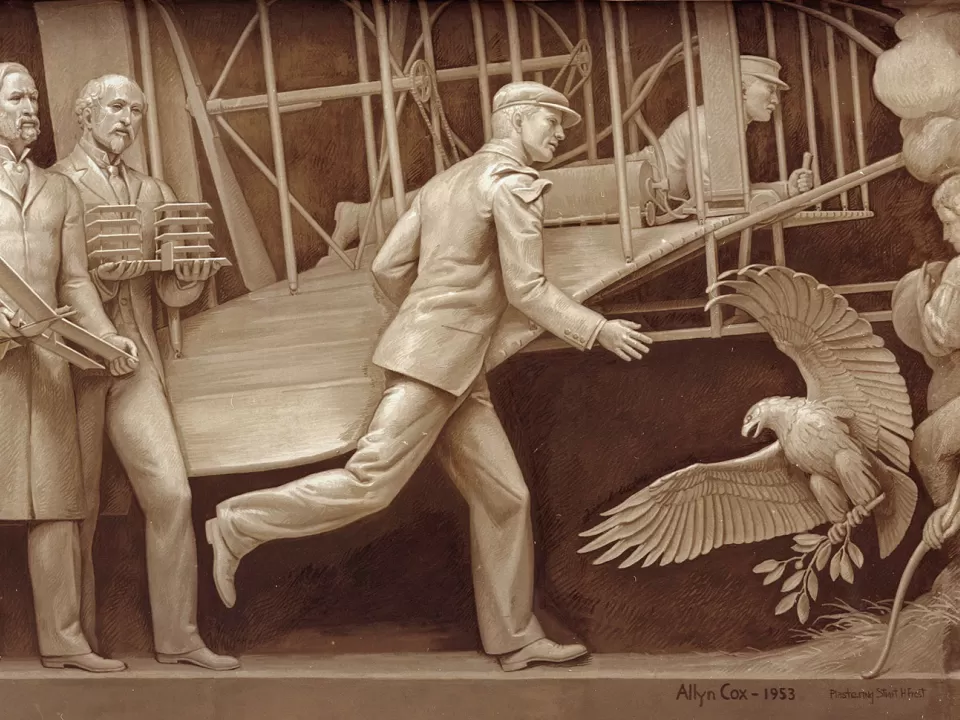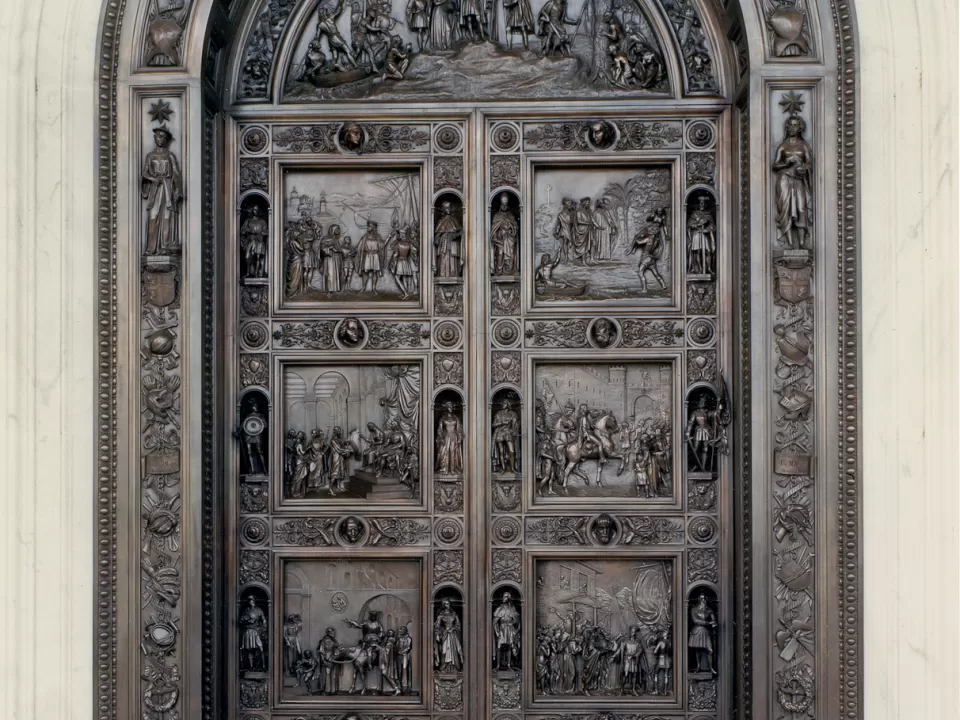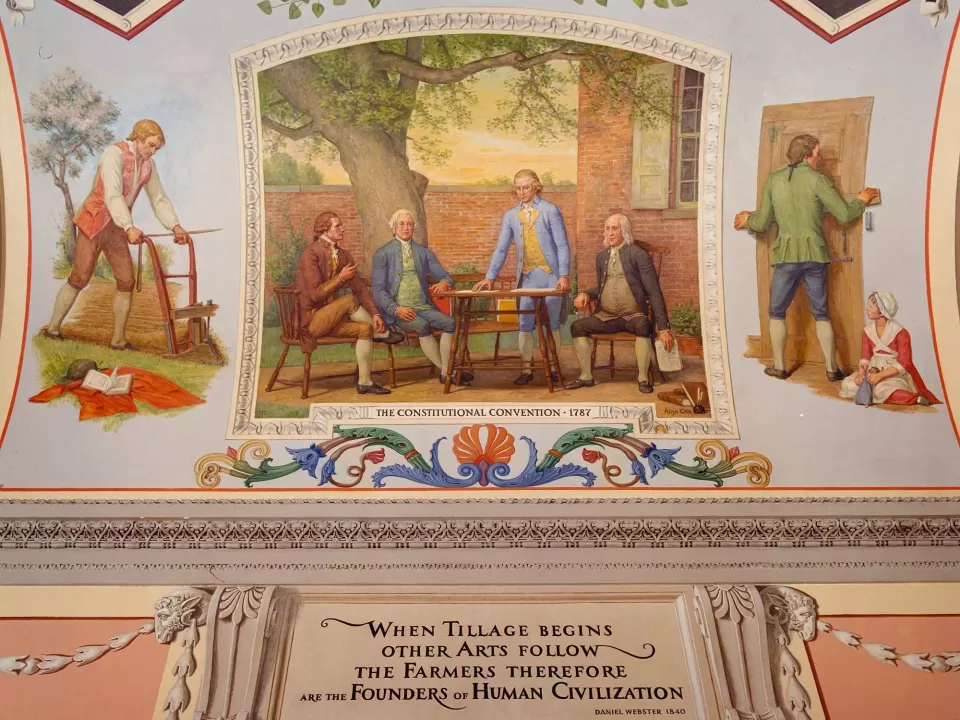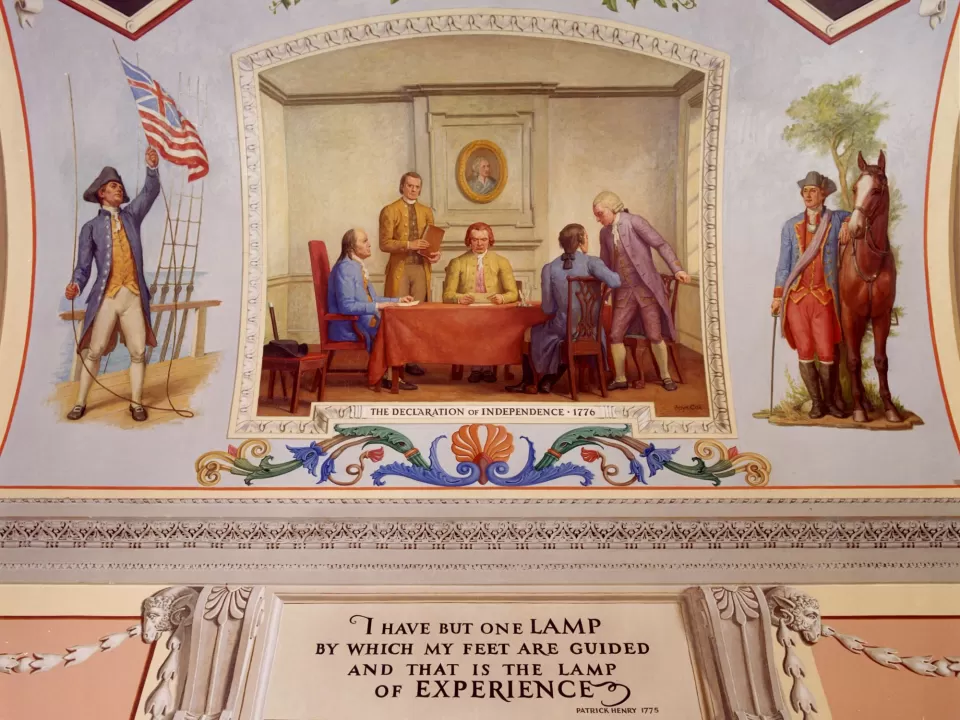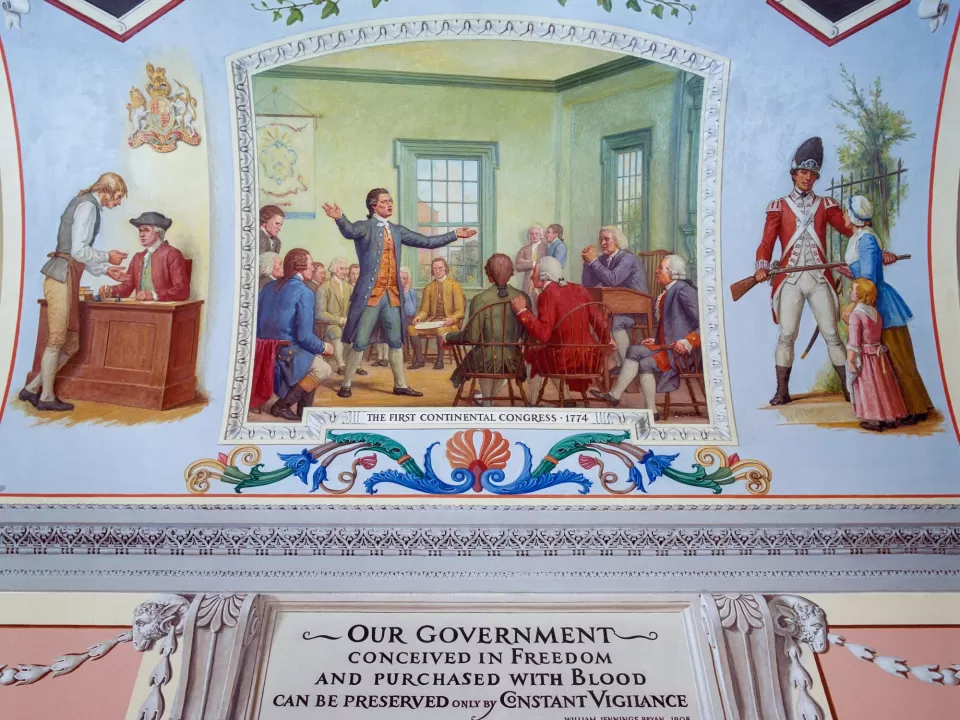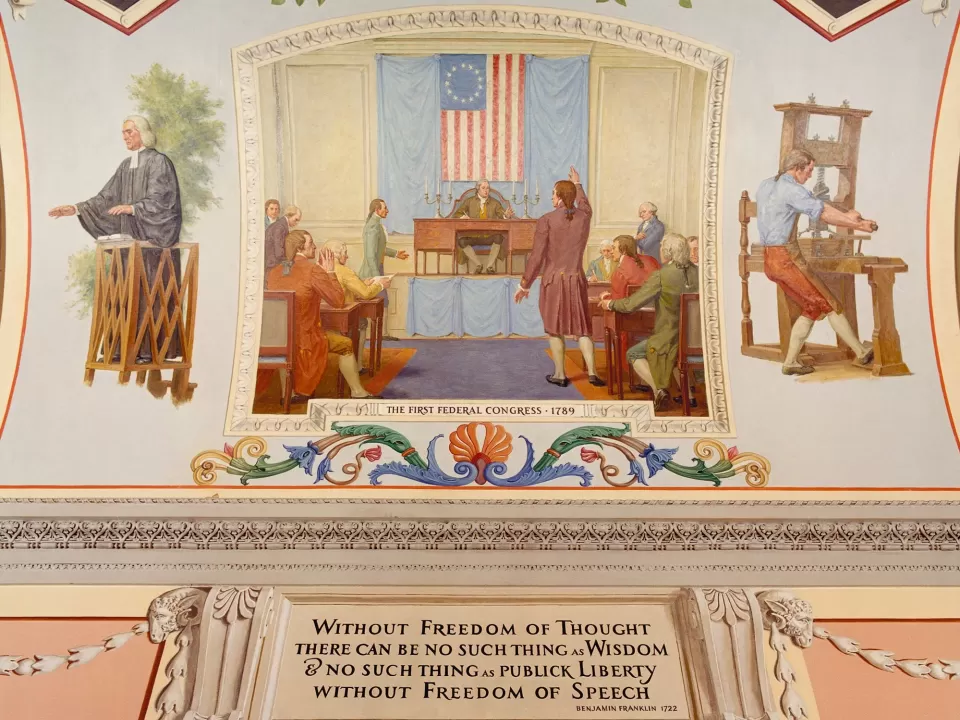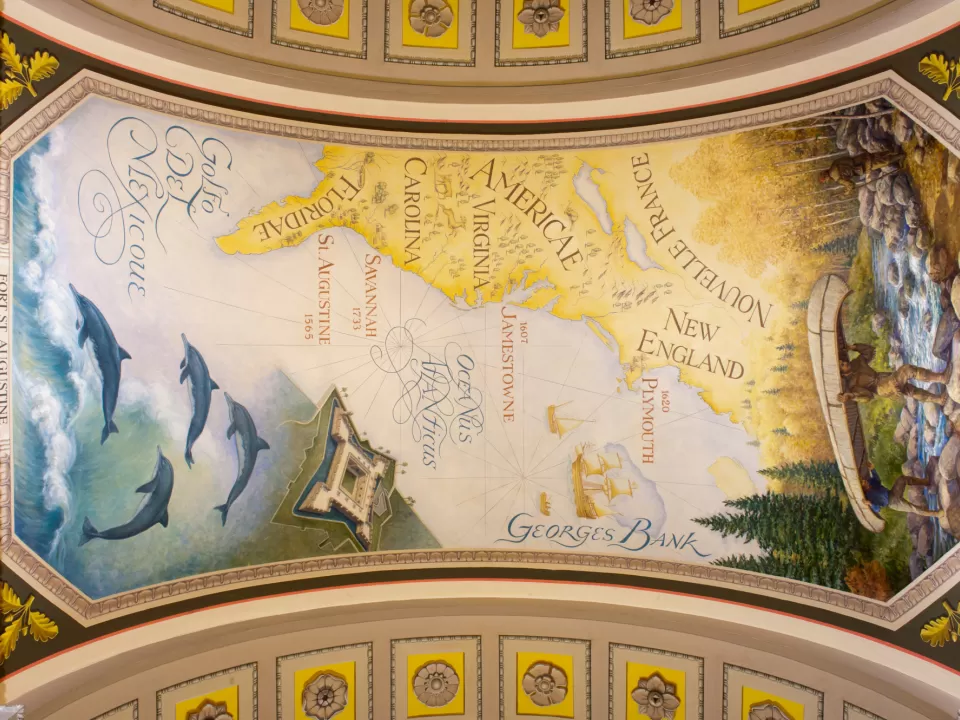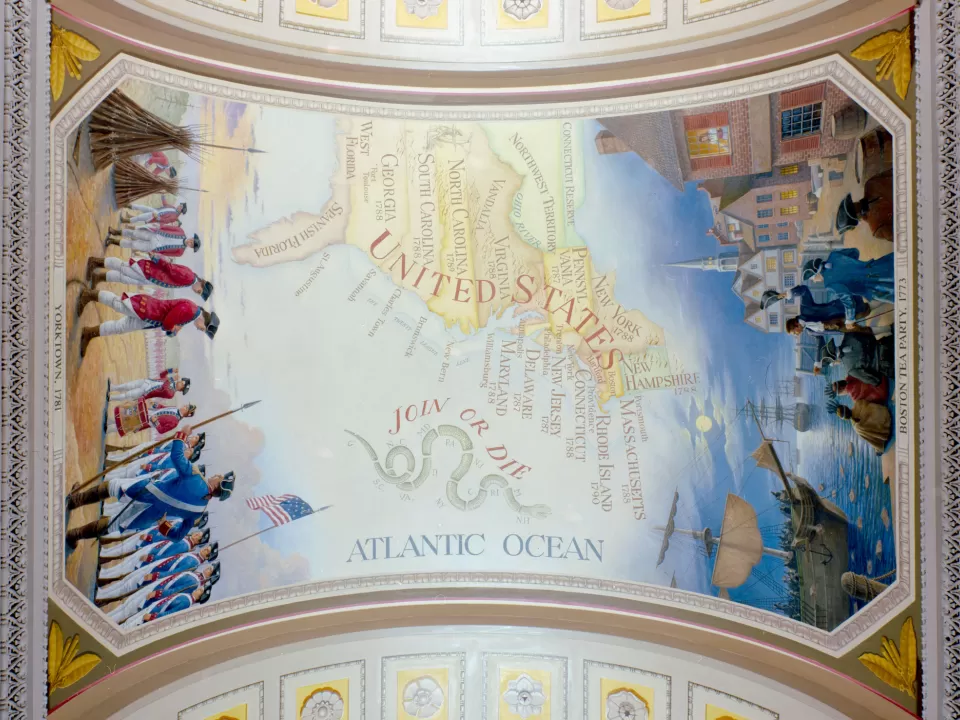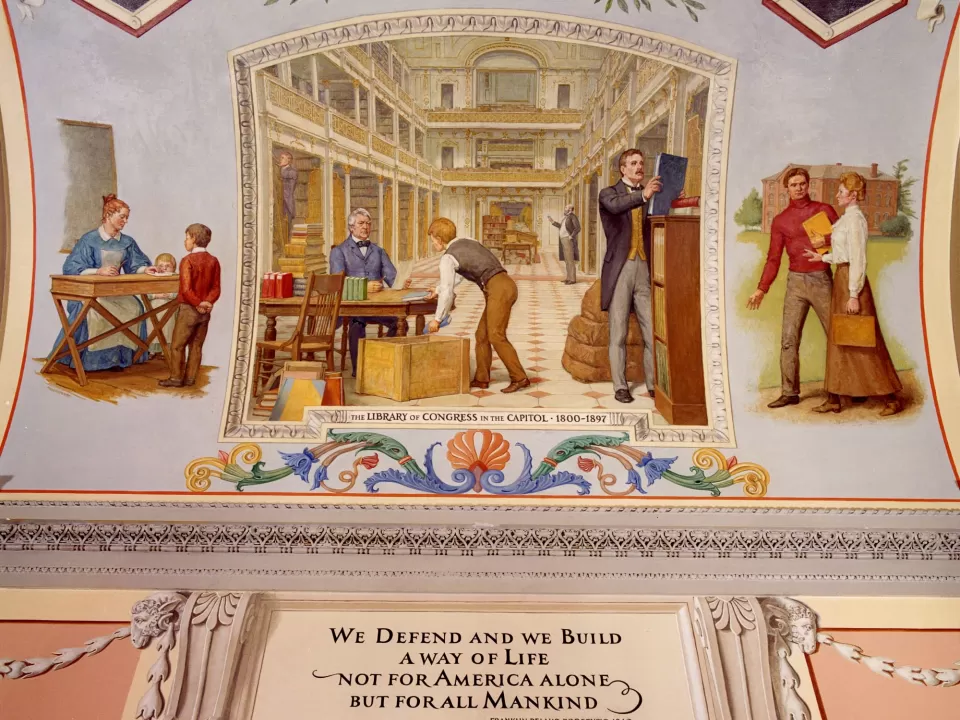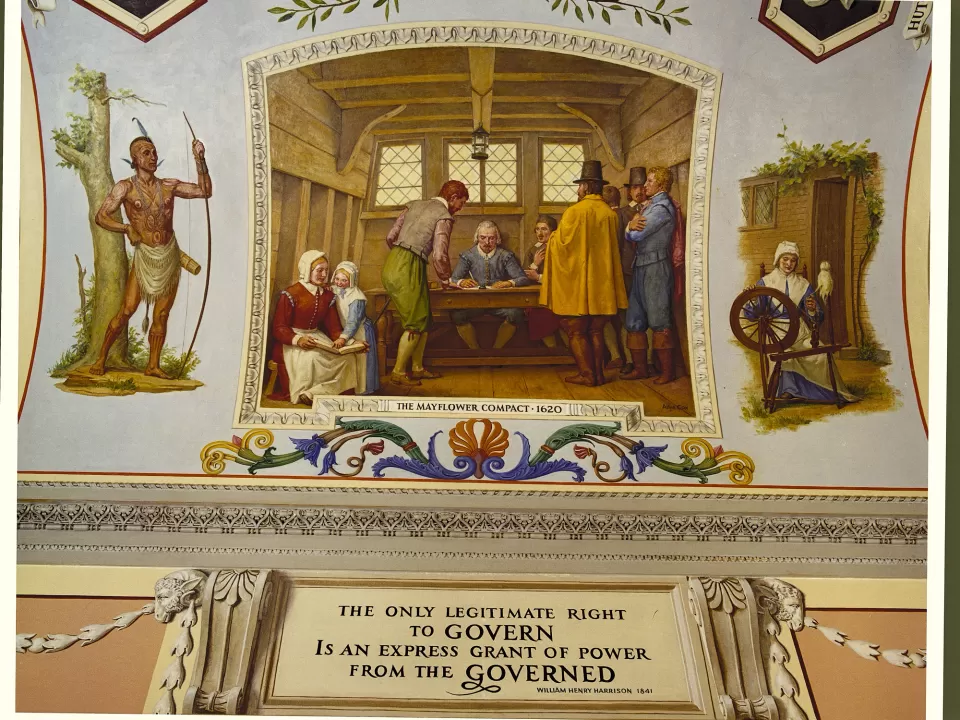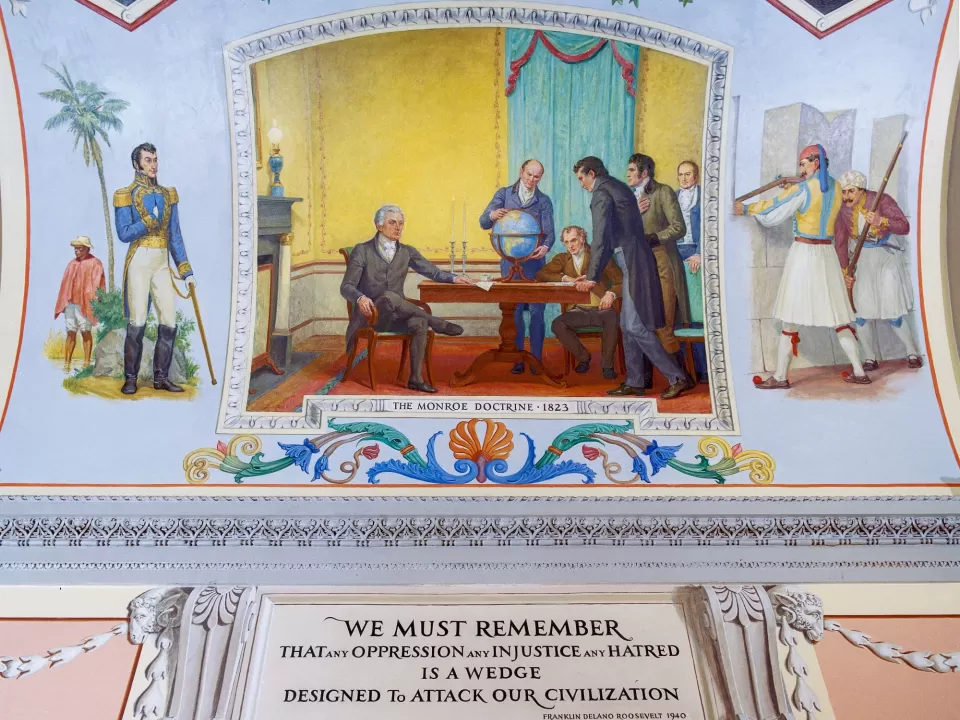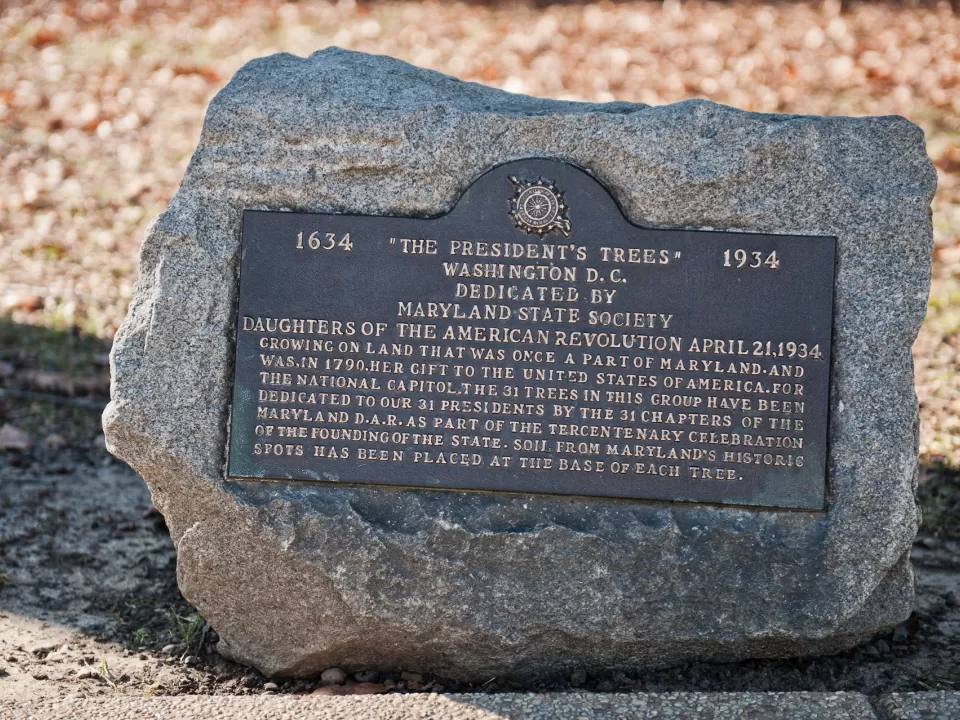AOC employees are responsible for the care and preservation of more than 300 works of art, architectural elements and landscape features.
Browse the collection below or learn more about our artists, collections and subjects.
Filter Results
Displaying 277 - 288 of 322
The Columbus Doors
The Constitutional Convention, 1787
Following the Revolutionary War, the new American government was first organized under the Articles of Confederation, but that document gave the federal government too little authority to be effect
The Declaration of Independence, 1776
In June 1776 five delegates to the Second Continental Congress drafted the Declaration of Independence.
The First Continental Congress, 1774
Delegates from all thirteen colonies met in 1774 in Philadelphia to discuss responses to increased British oppre
The First Federal Congress, 1789
Meeting in New York at Federal Hall, the first federal Congress initiated the committee system, levied taxes and imposts, and enacted a judicial system.
The First Four Settlements in America
The map shows the first four settlements in America, from St. Augustine (1565) to Plymouth (1620).
The First Thirteen Colonies
The Library of Congress in the Capitol, 1800-1897
In 1783 Representative James Madison introduced a resolution to create a library that would give the Congress access to works about the laws of nations and about American history and affairs.
The Mayflower Compact, 1620
The Mayflower Compact, a document signed aboard the ship Mayflower in 1620, set forth principles of tolerance and liberty for the government of a new colony in the New World.
The Monroe Doctrine, 1823
Responding to Russian territorial claims along the northern Pacific coast, and concerned that European nations would attempt to seize recently independent Latin American states, President James Mon
